WhatsApp Automation: The Ultimate Guide for Businesses in 2025
![]() Posted by ZöTok on August 25, 2025•5 min read
Posted by ZöTok on August 25, 2025•5 min read
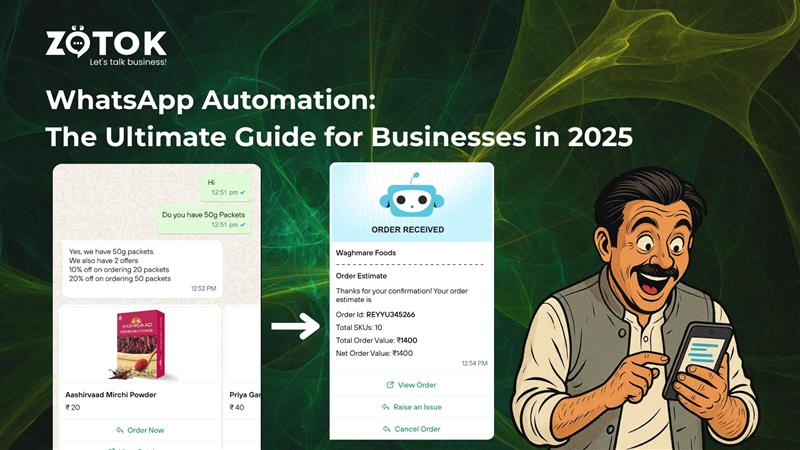
As a business owner in 2025, you're likely overwhelmed by the constant influx of customer messages on WhatsApp—from product inquiries and support requests to order follow-ups and complaints. With over 2 billion active users worldwide, WhatsApp has become the go-to channel for customer communication, but handling it manually can drain your time, inflate costs, and lead to missed sales opportunities. We get it—the frustration of responding late at night, dealing with repetitive questions, and watching potential revenue slip away due to slow or inconsistent service is all too real. That's where WhatsApp automation comes in: a game-changing solution that lets you respond instantly, 24/7, while freeing your team for strategic tasks that drive growth.
WhatsApp automation isn't just about sending quick replies; it's about creating seamless, personalized experiences that build loyalty and boost your bottom line. In this ultimate guide, we'll cover everything you need to know about WhatsApp automation for business—from how it works and its benefits to best practices, real-world use cases, and step-by-step implementation. Whether you're a small retailer or a large enterprise in sectors like e-commerce, hospitality, or finance, this article equips you with the knowledge to leverage WhatsApp effectively. By the end, you'll see how automation can reduce operational costs by up to 50%, increase customer satisfaction, and potentially grow revenues through better engagement and conversions.
Also Read: WhatsApp Business API vs. WhatsApp Business App: Which is Right for Your Business in 2025?
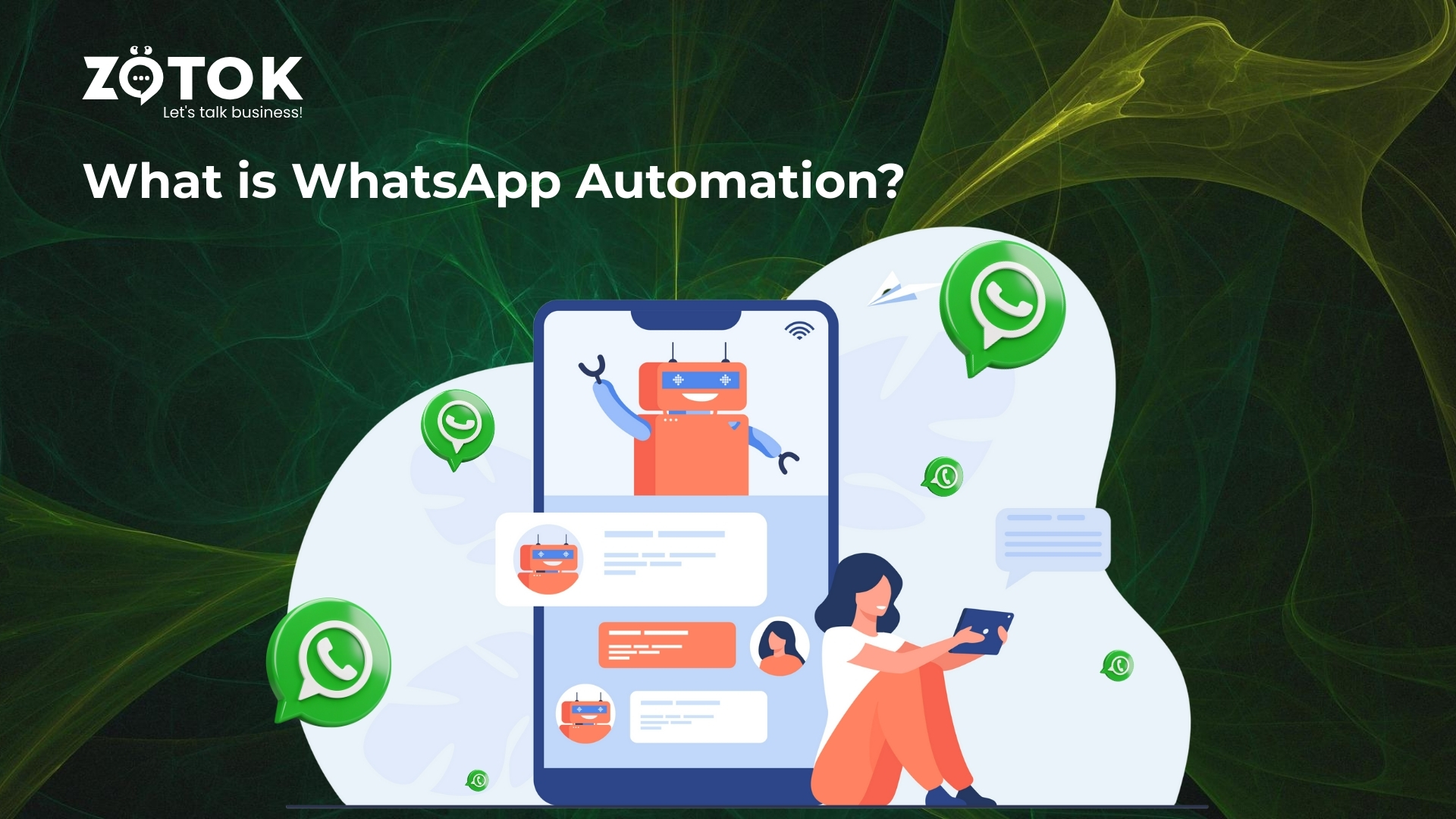
What is WhatsApp Automation?
Imagine never missing a customer query again, even at 3 AM, while your team focuses on closing deals instead of typing responses. WhatsApp automation makes this possible by using intelligent tools like chatbots, workflows, and API integrations to handle conversations automatically on WhatsApp. It's not just auto-replies; it's smart, context-aware interactions that mimic human responses, scaling your customer service without adding staff.
At its core, WhatsApp automation refers to the use of software and APIs to streamline messaging tasks. For businesses, this means automating everything from greeting new contacts to processing orders and sending notifications. Tools like the WhatsApp Business API (provided by Meta) enable advanced features, while third-party providers (e.g., ZöTok, Wati, or Respond.io) add AI-driven enhancements for personalization and integration.
Key Components of WhatsApp Automation
- Chatbots and AI Agents: Handle queries with natural language processing (NLP), supporting multiple languages and context from past interactions.
- Message Templates: Pre-approved messages for notifications, ensuring compliance with Meta's rules.
- Workflows: Automated sequences, like order confirmation followed by delivery updates.
- Integrations: Connect with CRM, ERP, or e-commerce platforms for real-time data pulls.
- Analytics: Track engagement, response times, and conversion rates.
Unlike manual messaging, automation ensures consistency, reduces human error, and operates 24/7. However, it's regulated—businesses must use the official API to avoid bans, and messages require user opt-in.
In 2025, with AI advancements, automation has evolved to include voice note parsing, sentiment analysis, and predictive responses, making it essential for competitive edge. Providers like ZöTok specialize in contextual replies for B2B, while others focus on e-commerce.
How Does WhatsApp Automation Work?
Setting up WhatsApp automation might seem daunting, but it's straightforward once you understand the mechanics. At a high level, it involves connecting your WhatsApp number to an API or tool that processes incoming messages and triggers responses based on rules or AI. Let's break it down step by step, including technical aspects for businesses looking to implement it.
Step-by-Step Breakdown
- Account Setup: Start with a WhatsApp Business account (free app for small businesses) or upgrade to the WhatsApp Business API for advanced automation. The API requires approval from Meta and a business service provider (BSP) like ZöTok or Twilio. Provide business verification (e.g., Facebook Business Manager ID, GST certificate) for a verified green tick.
- Integration with Tools: Connect to a platform. For basic automation, use the app's built-in features like quick replies. For advanced, integrate the API with CRM (e.g., HubSpot) or chatbots (e.g., via Dialogflow). Webhooks notify your system of new messages.
- Message Processing: When a message arrives, the system analyzes it:
- Keyword Matching: Simple rules trigger replies (e.g., "order status" sends tracking link).
- AI/NLP: Advanced tools like those in ZöTok parse intent, context, and language for dynamic responses.
- Data Pulls: Integrate with databases for personalized info (e.g., pull order details from ERP).
- Response Generation: Send automated replies, templates, or escalate to humans. Use flows for multi-step interactions (e.g., booking appointment).
- Follow-Ups and Analytics: Automate reminders; track metrics like open rates in dashboards.
Technical Flow (Simplified)
- Incoming Message → API/Webhook → Process (AI/Rule) → Response/Action → Log/Analyze.
In 2025, features like WhatsApp Flows allow no-code automation, while AI enhancements (e.g., sentiment detection) make responses more human-like. Limitations: 24-hour messaging window for non-template messages; opt-in required.
Benefits of Using WhatsApp Automation
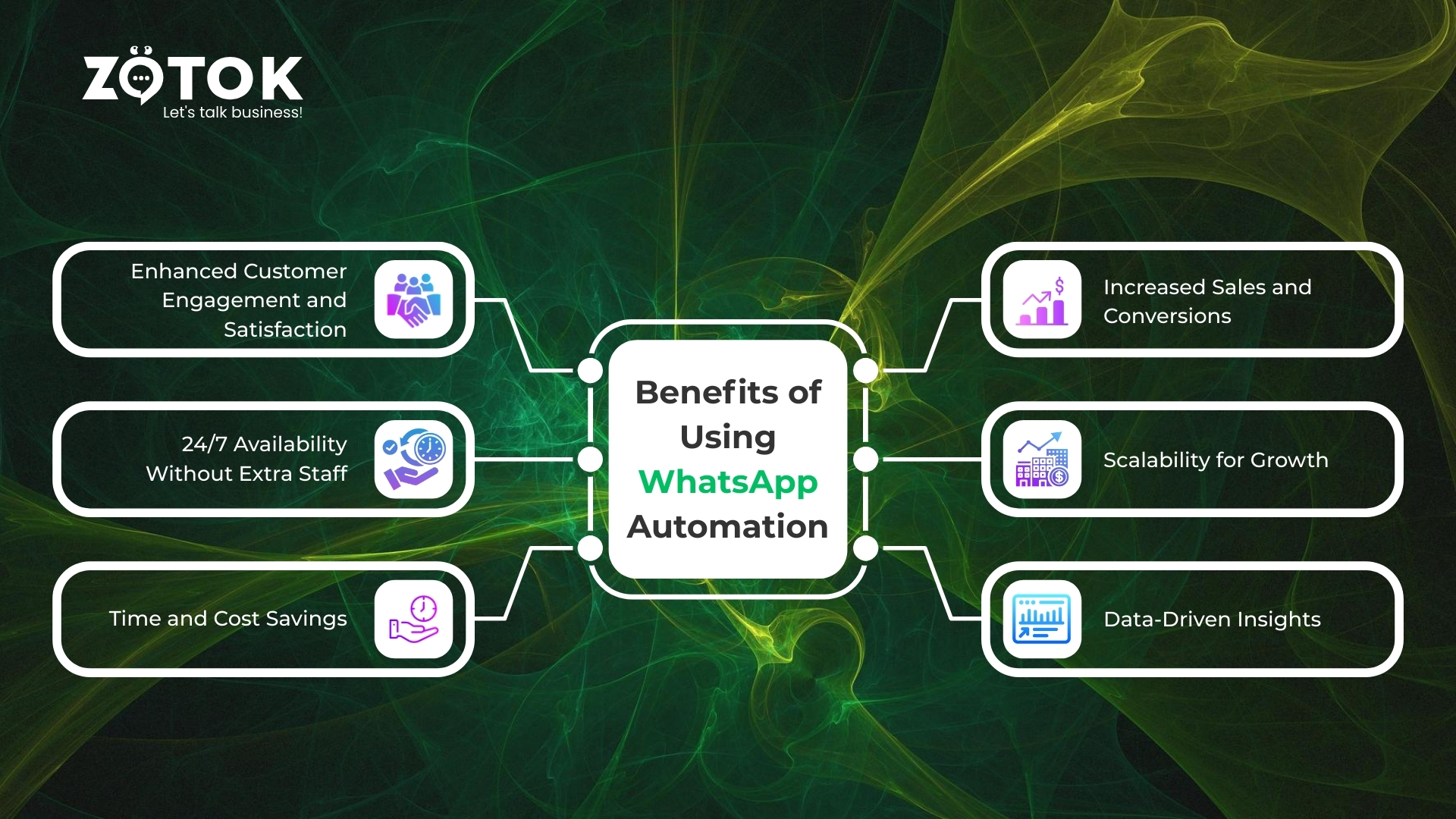
Implementing WhatsApp automation isn't just a tech upgrade—it's a strategic move that directly impacts your bottom line. From cost savings to revenue growth, here's how it transforms business operations.
1. Enhanced Customer Engagement and Satisfaction
Automation ensures instant responses, with open rates up to 98% on WhatsApp (vs. 20% for email). Personalized, contextual replies build trust, reducing churn by 25-30%.
2. 24/7 Availability Without Extra Staff
Handle queries anytime, capturing off-hour leads. Example: E-commerce businesses see 20% more conversions from night-time interactions, saving on overnight support teams.
3. Time and Cost Savings
Automate 70-80% of routine queries, cutting response time from minutes to seconds. Reduce staffing needs by 40%, with ROI in months—e.g., save $10,000/year on support for mid-sized firms.
4. Increased Sales and Conversions
Features like abandoned cart reminders recover 20-30% lost sales. Upsell/cross-sell via AI suggestions boost average order value by 25-35%.
5. Scalability for Growth
Handle thousands of chats without proportional costs. Multi-language support expands markets, driving international revenue without localization hires.
6. Data-Driven Insights
Analytics track engagement, helping refine strategies. Example: Identify high-value segments for targeted campaigns, increasing ROI by 40%.
Real-World Impact Table
| Benefit | Manual Approach Impact | Automation Impact (with Tools like ZöTok) |
|---|---|---|
| Response Time | Hours/Days | Seconds |
| Customer Satisfaction | Low (delays) | High (instant, personalized) |
| Operational Cost | High (staff) | Low (80% automated) |
| Revenue Growth | Stagnant | +20-40% via recoveries/upsells |
Automation also improves employee morale by reducing repetitive tasks, indirectly boosting productivity.
Best Practices for Using WhatsApp Automation
To maximize ROI and avoid pitfalls, follow these best practices. Automation should enhance, not replace, human touch—focus on empathy and compliance.
1. Obtain User Consent and Opt-Ins
Always get explicit permission via forms or initial messages. Use double opt-in to comply with Meta's rules, avoiding bans and building trust.
2. Personalize Interactions
Use data (name, history) for tailored responses. Tools like ZöTok's AI analyze context for human-like chats, increasing engagement by 40%.
3. Start Simple and Scale
Begin with basics (welcomes, FAQs), test, then add complex flows (e.g., payments). A/B test templates for optimization.
4. Integrate with Business Tools
Link to CRM/ERP for seamless data flow. Example: Auto-pull order status from Shopify, saving manual checks.
5. Monitor and Analyze Performance
Use dashboards for metrics like response time/open rates. Adjust based on insights—e.g., if drop-offs high, simplify flows.
6. Ensure Compliance and Security
Follow Meta's policies (no spam, template approvals). Use end-to-end encryption; providers like ZöTok add extra layers.
7. Blend Automation with Human Support
Set escalation rules for complex queries. Hybrid approach maintains quality, reducing resolution time by 50%.
8. Train Your Team
Educate staff on tool use and monitoring. Regular audits prevent issues.
9. Update Content Regularly
Refresh templates/catalogs to stay relevant. Multi-language support expands reach.
10. Gather Feedback
Post-interaction surveys refine automation, ensuring continuous improvement.
Adhering to these saves on fines (compliance) and grows loyalty (personalization).
Use Cases of WhatsApp Automation for Businesses
WhatsApp automation shines in various industries, solving specific pain points while driving efficiency and growth. Below, we explore use cases with problems, solutions, benefits, and best practices.
1. Customer Support Automation
Problem: High query volume overwhelms teams, leading to delays.
Solution: AI chatbots handle FAQs, escalate complex issues.
Benefits: 50% faster resolutions, 40% cost savings; higher satisfaction boosts retention (20% revenue increase).
Best Practices: Use NLP for context; integrate with ticketing systems.
2. E-Commerce Order Management
Problem: Abandoned carts, manual tracking.
Solution: Automated confirmations, updates, reminders.
Benefits: Recovers 25% lost sales, saves 60% on follow-ups.
Best Practices: Personalize with order history; A/B test reminders.
3. Appointment Booking and Reminders
Problem: No-shows cost revenue.
Solution: Bot schedules, sends multi-language reminders.
Benefits: Reduces no-shows by 30%, frees staff time.
Best Practices: Integrate calendars; confirm via buttons.
4. Lead Generation and Qualification
Problem: Manual lead handling misses opportunities.
Solution: CTWA ads to chats, AI qualifies leads.
Benefits: 40% higher conversion, lower acquisition costs.
Best Practices: Segment leads; follow up with personalized flows.
5. Marketing and Promotions
Problem: Low email engagement.
Solution: Targeted campaigns, dynamic catalogs.
Benefits: 98% open rates, 35% sales uplift.
Best Practices: Use opt-ins; track ROI with analytics.
6. Feedback and Surveys
Problem: Low response rates to emails.
Solution: Post-interaction bots collect feedback.
Benefits: 50% higher responses, insights for improvement.
Best Practices: Keep short; incentivize with offers.
7. Internal Team Communication
Problem: Scattered tools slow collaboration.
Solution: Automated notifications for updates.
Benefits: 30% faster workflows, reduced errors.
Best Practices: Role-based access; integrate with project tools.
For sector-specific (e.g., healthcare, finance), adapt with compliance in mind.
Mistakes to Avoid in WhatsApp Automation
Even powerful tools can backfire if misused. Here are common pitfalls and how to dodge them.
- Violating Meta's Policies: Sending spam leads to bans. Avoid: Get opt-ins, use templates.
- Over-Automating: Robotic responses alienate. Avoid: Blend AI with human handoff.
- Ignoring Personalization: Generic messages feel spammy. Avoid: Use data for context.
- Neglecting Analytics: No monitoring wastes potential. Avoid: Review metrics weekly.
- Poor Integration: Disconnected tools cause errors. Avoid: Test ERP/CRM links.
- Skipping Tests: Launching untested flows fails. Avoid: Pilot with small groups.
- Forgetting Mobile Optimization: Desktop-focused ignores users. Avoid: Design for mobile.
- Non-Compliance with Data Privacy: Risks fines. Avoid: Follow GDPR/CCPA.
Avoiding these ensures smooth, effective automation.
How to Use WhatsApp Automation: The Ultimate Step-By-Step Guide
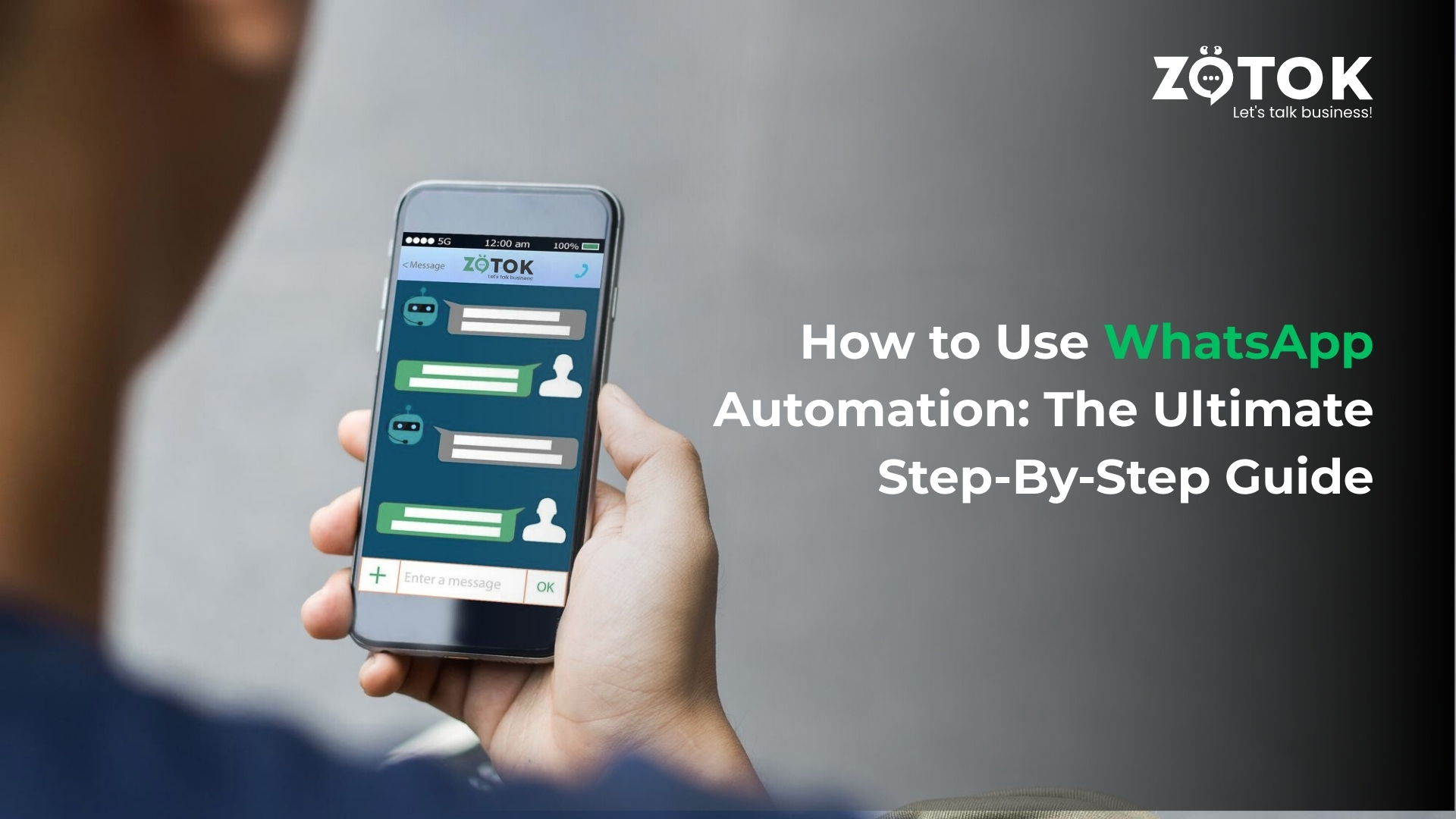
Ready to automate? This guide covers from basics to advanced, including app vs. API.
WhatsApp Business App Automation (For Small Businesses)
- Quick Replies: Set predefined responses for FAQs.
- Labels: Organize chats.
- Catalogs: Share products.
- Broadcasts: Send to 256 contacts (opt-in required).
- Limitations: No AI, limited devices; suitable for <100 daily messages.
WhatsApp Business API Automation (For Scale)
- Advanced: Chatbots, integrations, unlimited agents.
- Providers: ZöTok, Twilio, MessageBird.
Step-by-Step Setup
- Verify Business: Create Facebook Business Manager, submit docs (GST, ID).
- Choose Provider: Select BSP (e.g., ZöTok for AI focus).
- Get API Access: Approve number, set up webhooks.
- Build Workflows: Use no-code tools for bots/templates.
- Integrate Systems: Connect CRM/ERP.
- Test and Launch: Pilot, monitor.
- Optimize: Analyze, iterate.
Time: 1-4 weeks; cost: API free, BSP fees vary.
10 Examples of WhatsApp Automation
Here are 10 practical examples, with how-to and benefits.
- Automated Welcome Messages: Greet new contacts with personalized info. How: Template trigger on first message. Benefit: 20% higher engagement.
- FAQ Chatbots: AI answers common questions. How: NLP integration. Benefit: 70% query resolution without staff.
- Order Confirmations: Send after purchase. How: E-commerce hook. Benefit: Reduces cancellations by 15%.
- Abandoned Cart Reminders: Nudge incomplete checkouts. How: Timed workflow. Benefit: Recovers 25% lost sales.
- Appointment Reminders: Confirm bookings. How: Calendar sync. Benefit: 30% fewer no-shows.
- Payment Reminders: Gentle dues nudges. How: CRM trigger. Benefit: 40% faster collections.
- Product Recommendations: Upsell based on history. How: AI analysis. Benefit: 35% order value increase.
- Feedback Surveys: Post-service polls. How: Automated flow. Benefit: Actionable insights.
- Delivery Updates: Real-time tracking. How: Logistics integration. Benefit: 25% fewer status queries.
- Promotional Campaigns: Targeted offers. How: Segmentation. Benefit: 40% conversion lift.
Expand with your tool for custom flows.
How to Implement WhatsApp Automation in Your Business

Implementation varies by size; here's a phased approach.
Phase 1: Planning (1 Week)
- Assess needs (e.g., support volume).
- Choose app/API.
- Budget: App free; API $50-500/month + BSP.
Phase 2: Setup (1-2 Weeks)
- Verify, integrate tools.
- Build/test bots.
Phase 3: Launch and Optimize (Ongoing)
- Train team, go live.
- Monitor KPIs, adjust.
Challenges: Integration complexity—use BSPs. Success stories: Brands like Nike use for 30% engagement boost.
Conclusion
In 2025, WhatsApp automation is essential for businesses aiming to stay competitive—saving time, cutting costs, and driving growth through efficient, personalized communication. From basic app features for startups to API-powered AI for enterprises, the possibilities are vast. By following this guide, you can implement automation that not only meets customer expectations but exceeds them, turning WhatsApp into a revenue engine. Start small, measure results, and scale—your business will thank you.
Frequently Asked Questions
What is the difference between WhatsApp Business App and API?
App for small-scale (basic automation); API for scale (advanced integrations/AI). Choose API for growth.
Is WhatsApp automation legal?
Yes, with opt-ins and Meta compliance. Avoid spam to prevent bans.
How much does it cost?
App free; API via BSPs ($0.005-0.01/message + setup). ROI high through savings.
Can I use chatbots without coding?
Yes, no-code platforms like ZöTok or Wati offer drag-and-drop builders.
What if automation fails?
Set handoff rules; monitor for quick fixes.
Does it support multiple languages?
Yes, AI tools handle 100+ languages for global reach.
How to measure success?
Track response time, engagement rates, conversions in analytics.
For more, explore Meta's docs or contact a provider like ZöTok.
Blog List
 WhatsApp Automation: The Ultimate Guide for Businesses in 2025
WhatsApp Automation: The Ultimate Guide for Businesses in 2025 How to Set Up WhatsApp Business for Your Business: The Ultimate Step-by-Step Guide
How to Set Up WhatsApp Business for Your Business: The Ultimate Step-by-Step Guide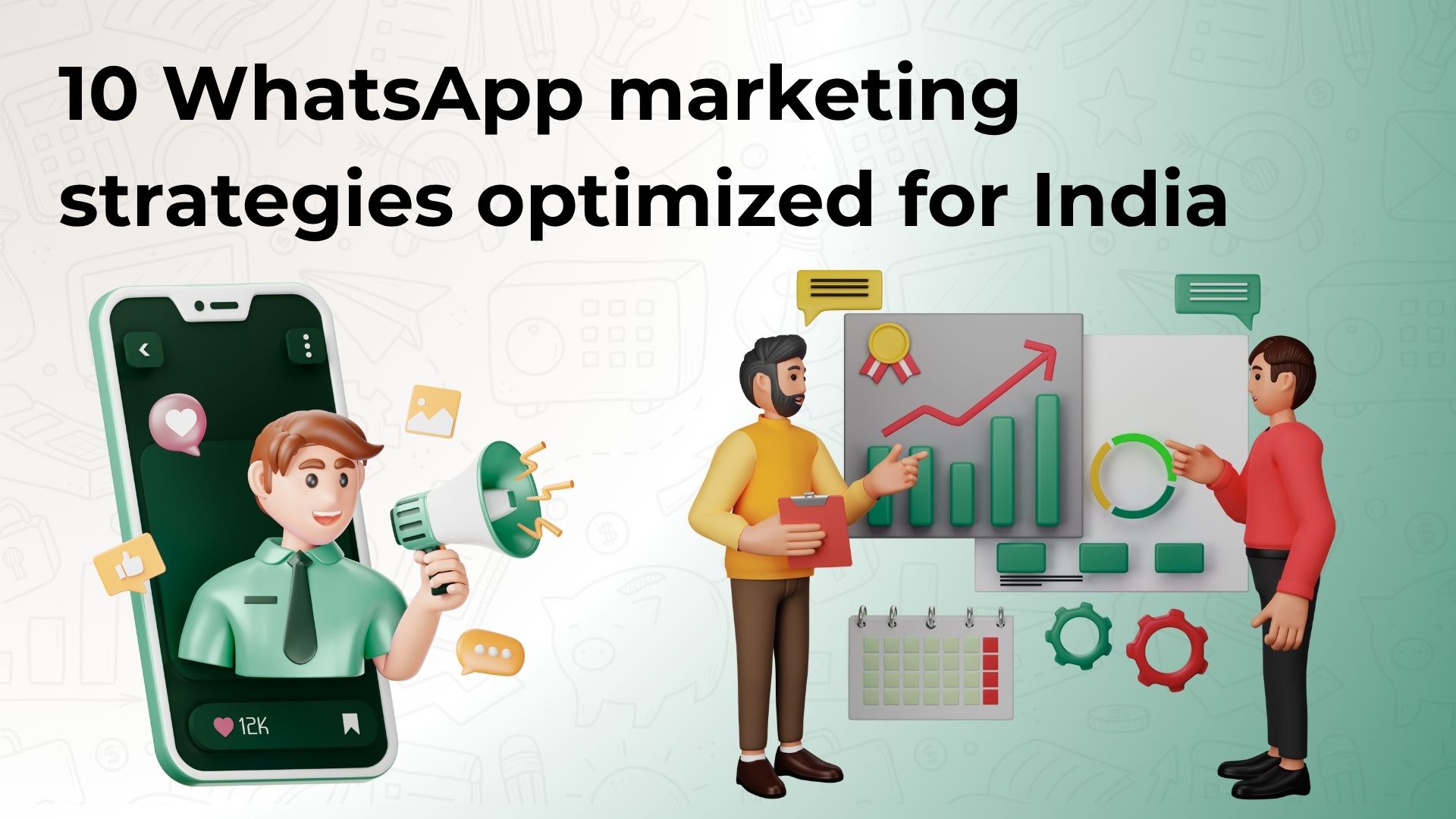 Top 10 WhatsApp Marketing Strategies for Indian Businesses: A Comprehensive Guide
Top 10 WhatsApp Marketing Strategies for Indian Businesses: A Comprehensive Guide Automating Customer Service on WhatsApp with Zotok.ai's GenAI: The Ultimate Guide for Indian Businesses
Automating Customer Service on WhatsApp with Zotok.ai's GenAI: The Ultimate Guide for Indian Businesses Managing High Volumes of Customer Inquiries on WhatsApp: A Comprehensive Guide for Indian Businesses
Managing High Volumes of Customer Inquiries on WhatsApp: A Comprehensive Guide for Indian Businesses Managing Customer Complaints on WhatsApp Effectively: A Comprehensive Guide for Indian Businesses
Managing Customer Complaints on WhatsApp Effectively: A Comprehensive Guide for Indian Businesses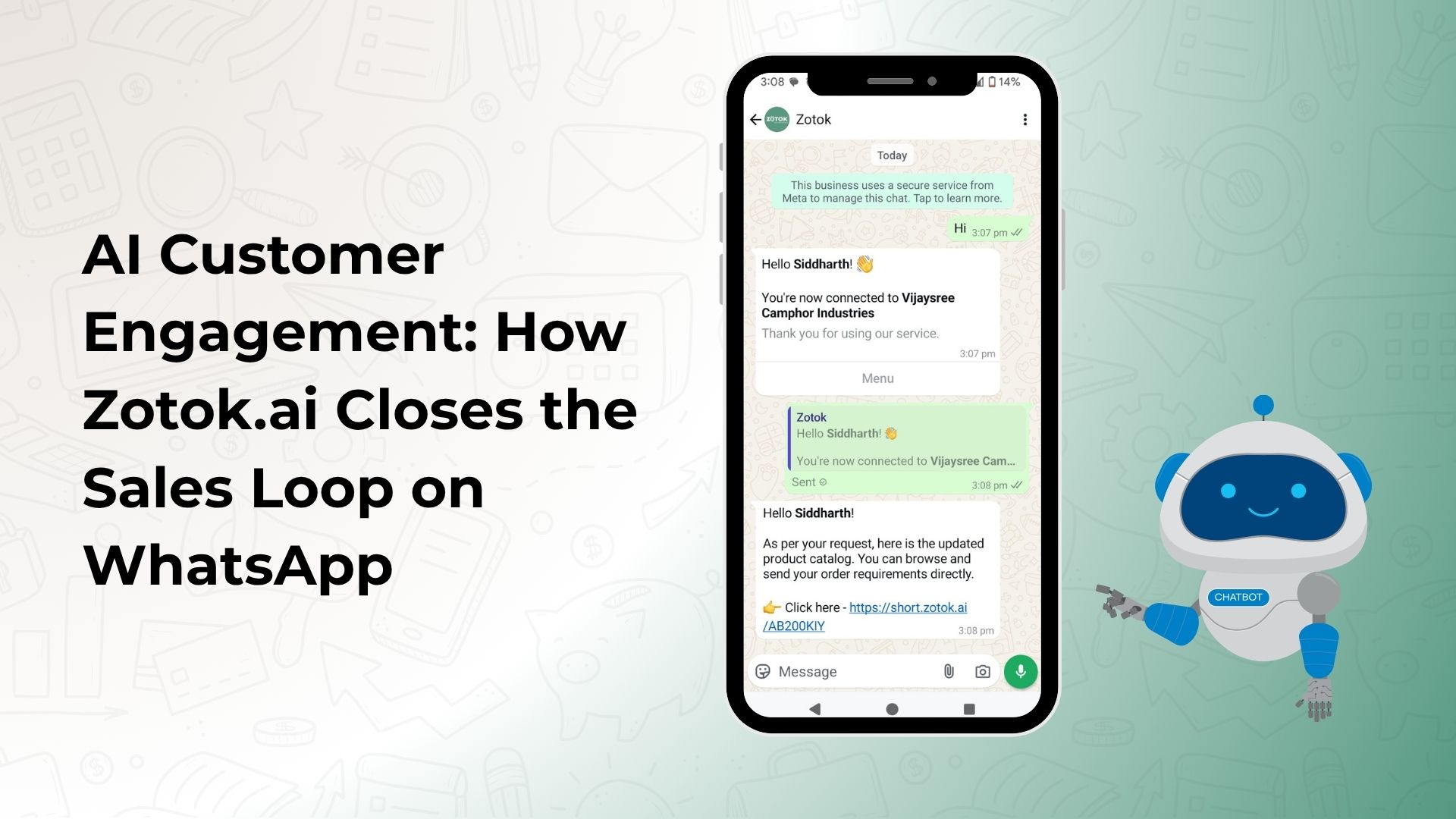 AI Customer Engagement: How Zotok.ai Closes the Sales Loop on WhatsApp
AI Customer Engagement: How Zotok.ai Closes the Sales Loop on WhatsApp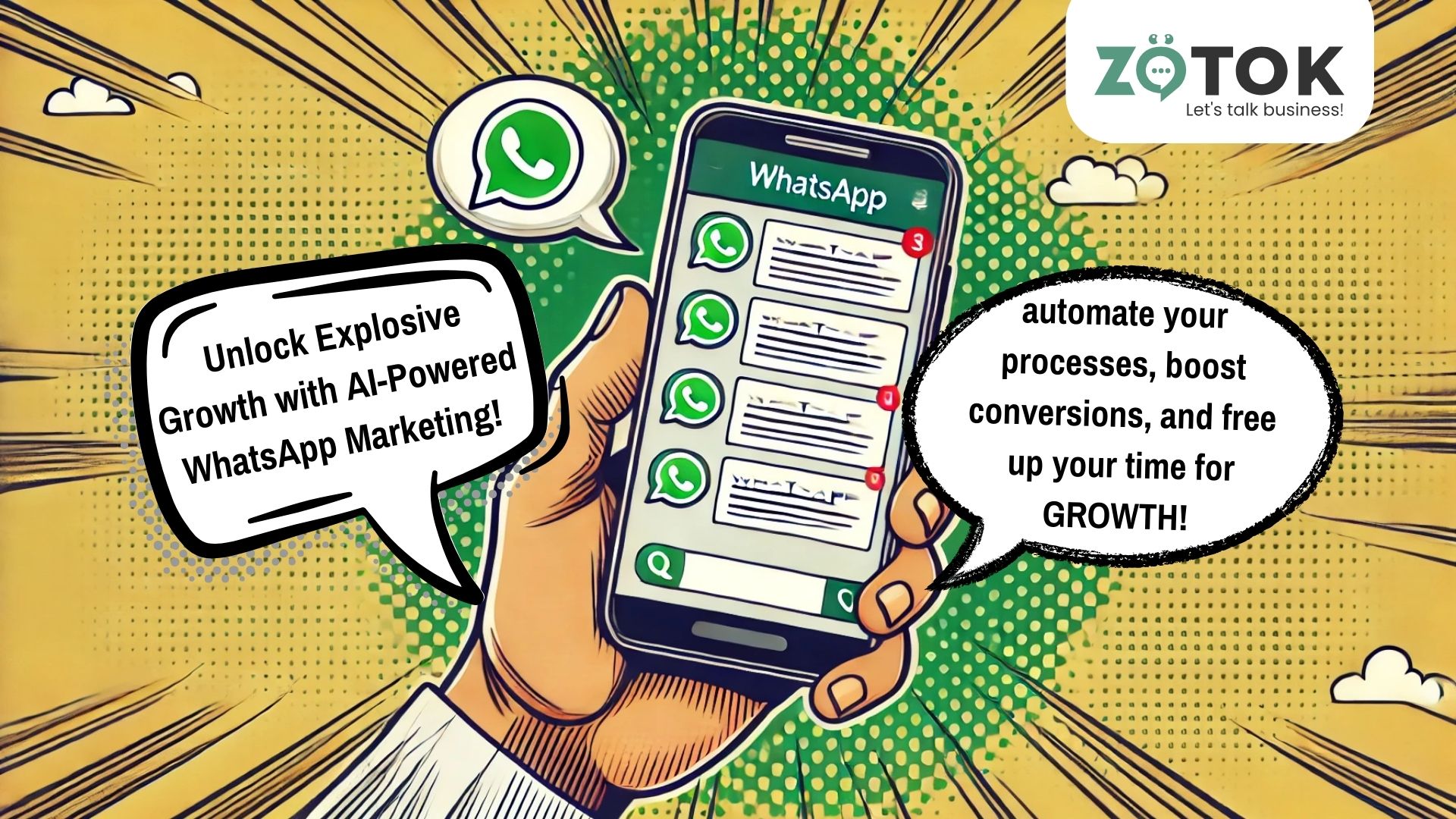 WhatsApp Marketing
WhatsApp Marketing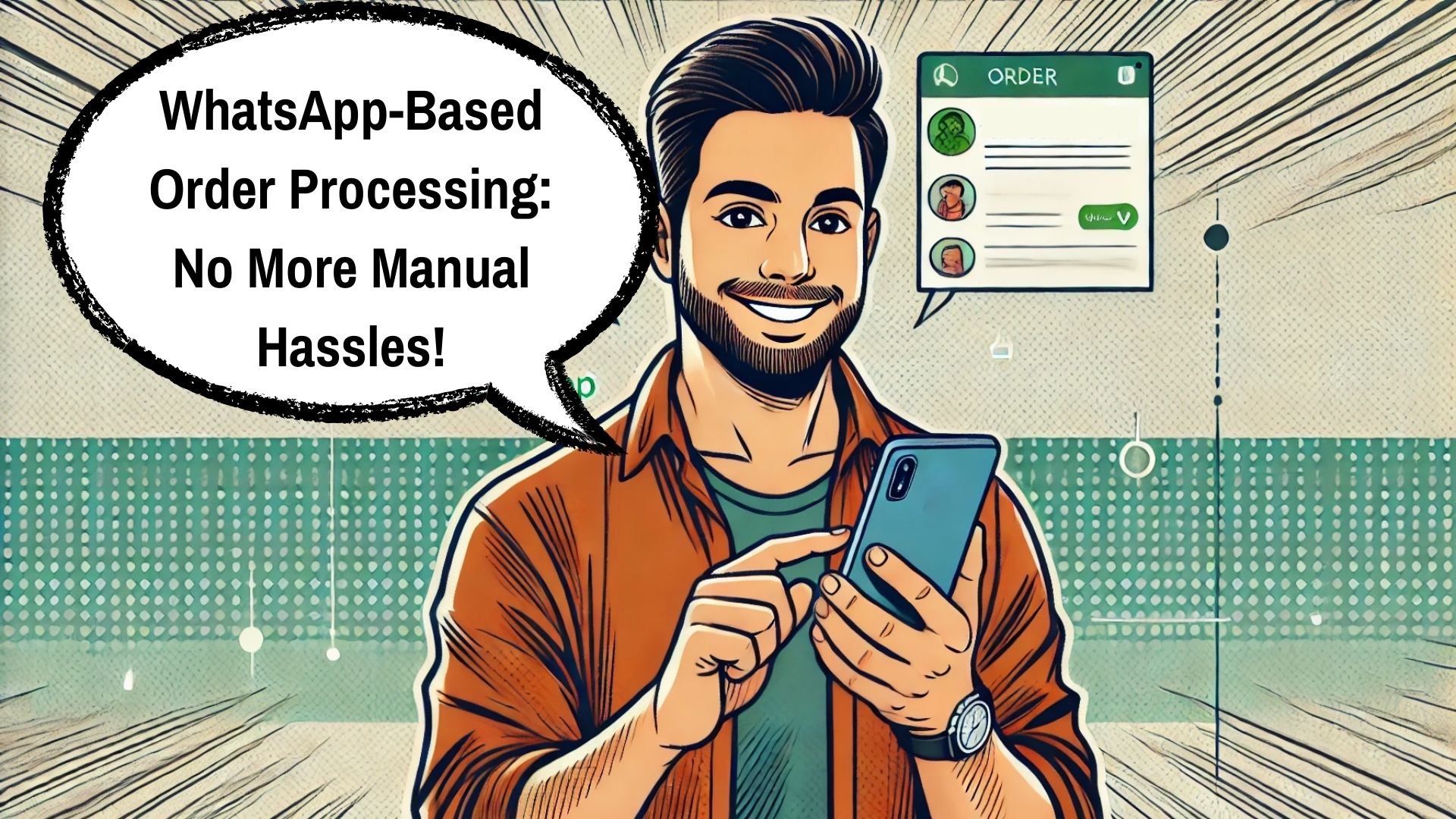 WhatsApp Order Processing
WhatsApp Order Processing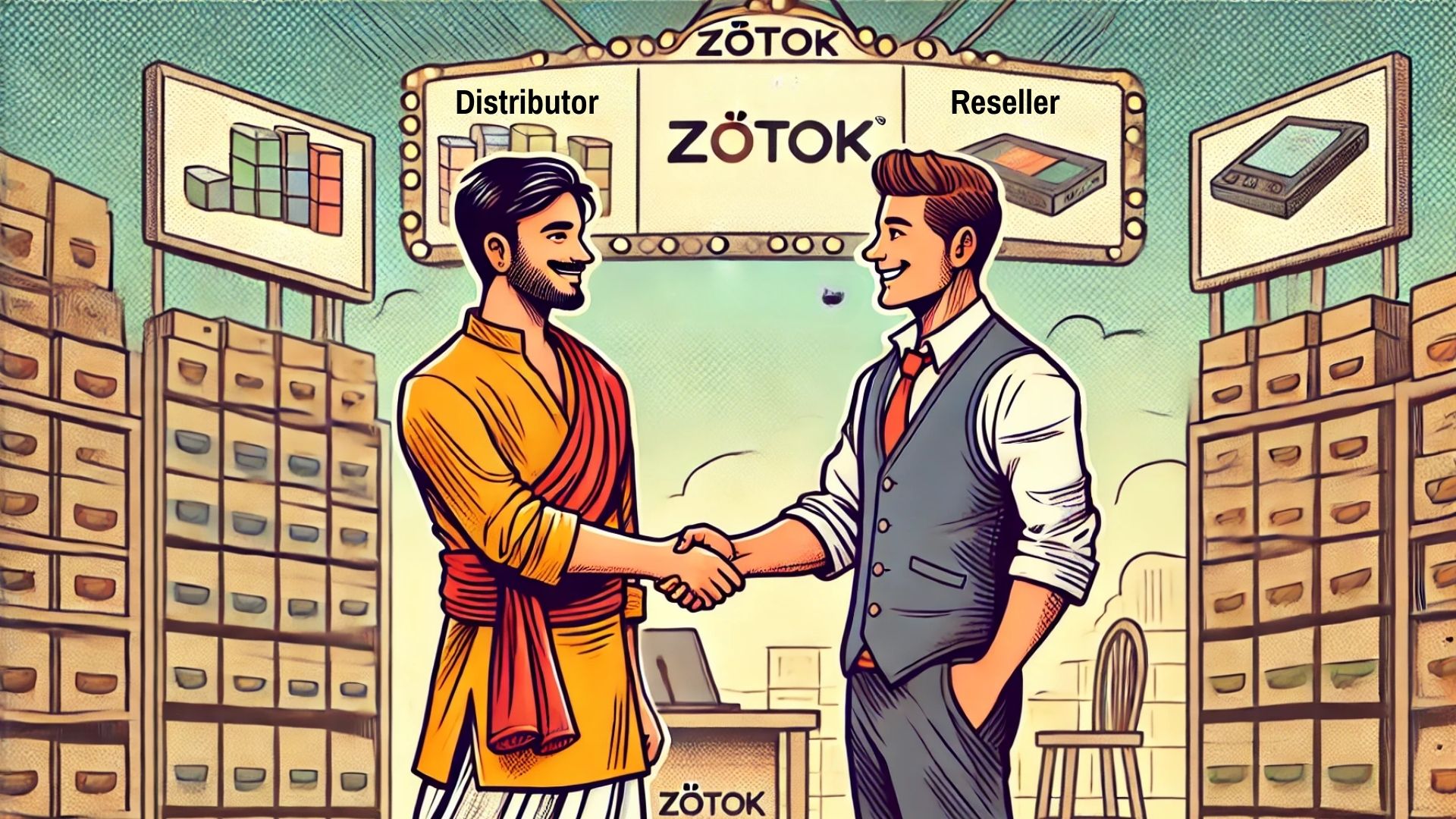 Distributor & Reseller Engagement on WhatsApp
Distributor & Reseller Engagement on WhatsApp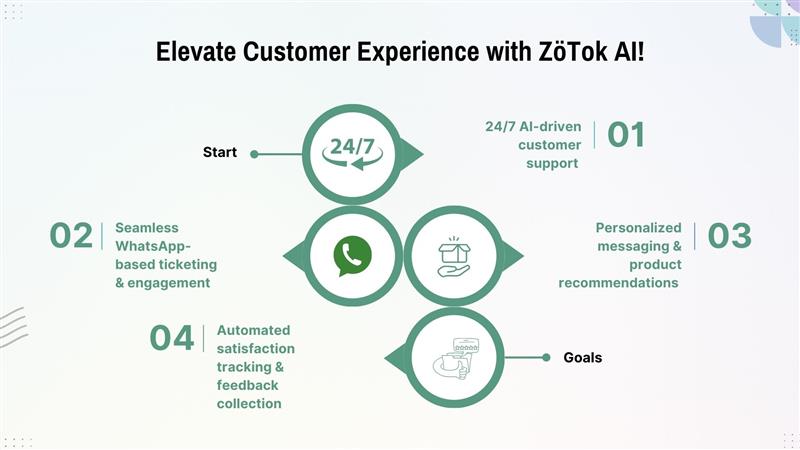 Customer Retention and Support on WhatsApp
Customer Retention and Support on WhatsApp Catalog Sharing on WhatsApp: How ZöTok Solves the Catalogue and Image-Sending Problem for Traders and Business Owners
Catalog Sharing on WhatsApp: How ZöTok Solves the Catalogue and Image-Sending Problem for Traders and Business Owners Want to Grow Your Business? Use WhatsApp API
Want to Grow Your Business? Use WhatsApp API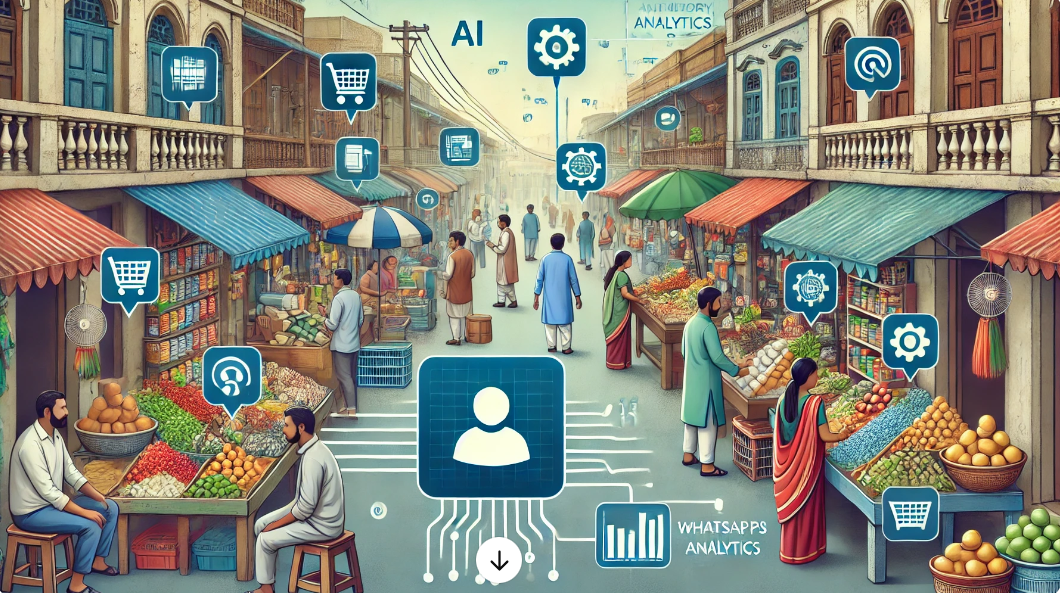 GenAI in General Trade: Transforming India's Distribution Landscape
GenAI in General Trade: Transforming India's Distribution Landscape Overcoming Distribution Challenges in India with WhatsApp Solutions
Overcoming Distribution Challenges in India with WhatsApp Solutions Distributor Management with ZöTok: WhatsApp Commerce and Generative AI Solutions for Smarter Supply Chains
Distributor Management with ZöTok: WhatsApp Commerce and Generative AI Solutions for Smarter Supply Chains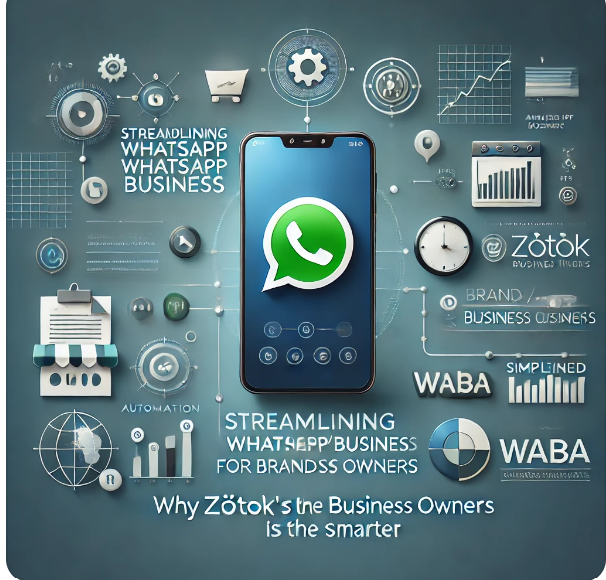 WhatsApp Business for Brand/Business Owners: Why ZöTok's WABA is the Smarter Choice
WhatsApp Business for Brand/Business Owners: Why ZöTok's WABA is the Smarter Choice ZöTok: India's First Network CRM Platform Utilizing GenAI on WhatsApp
ZöTok: India's First Network CRM Platform Utilizing GenAI on WhatsApp